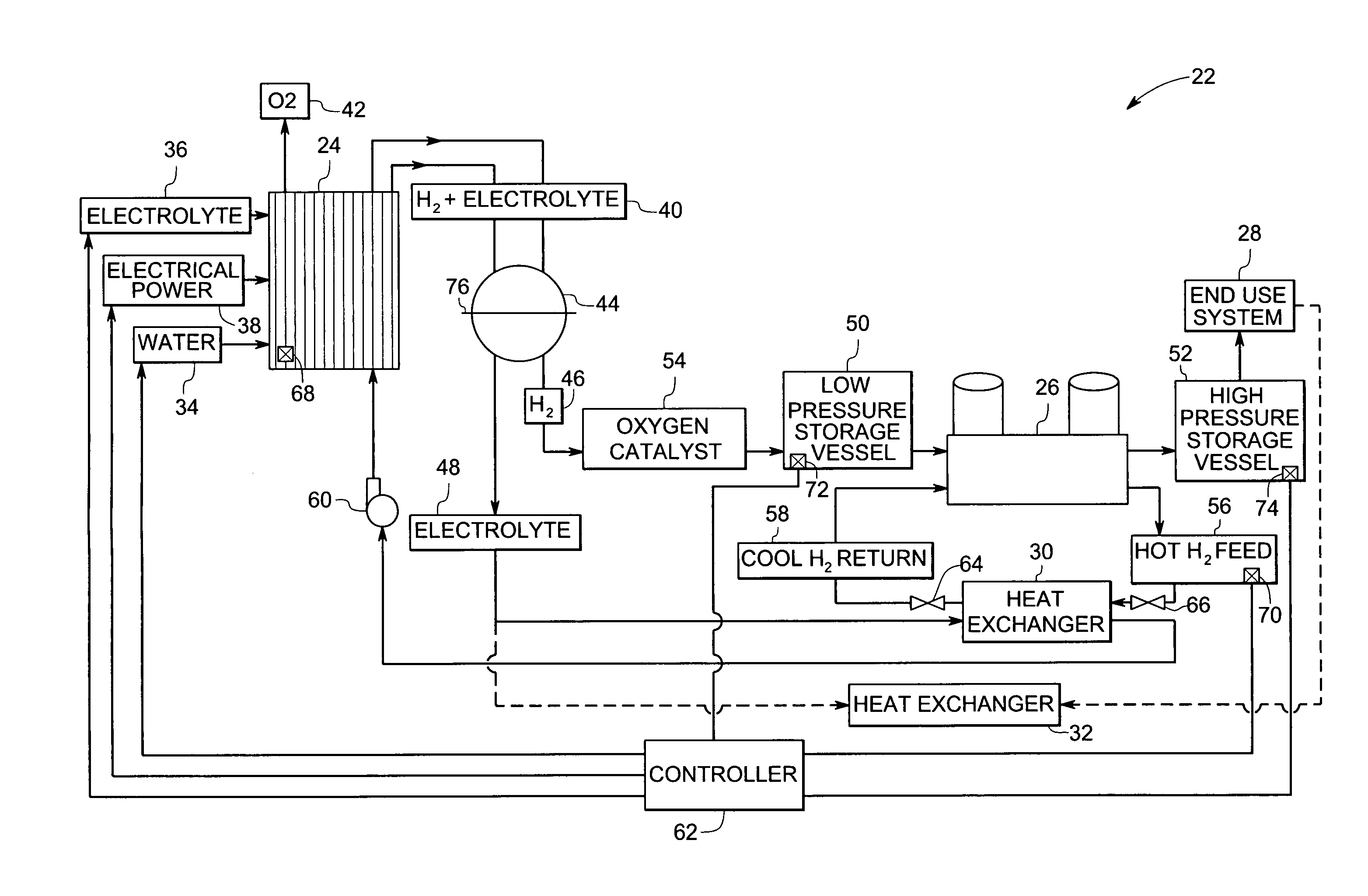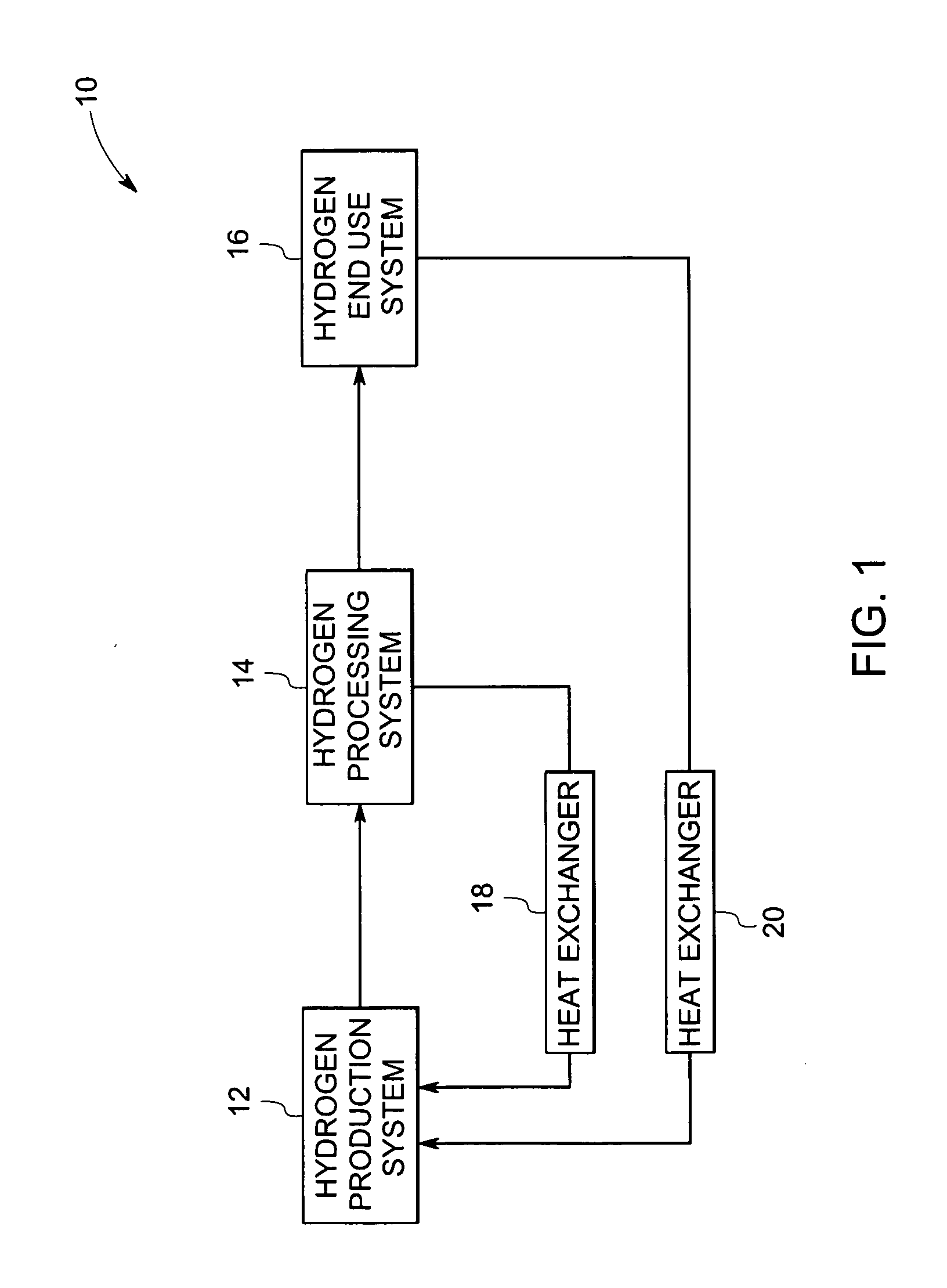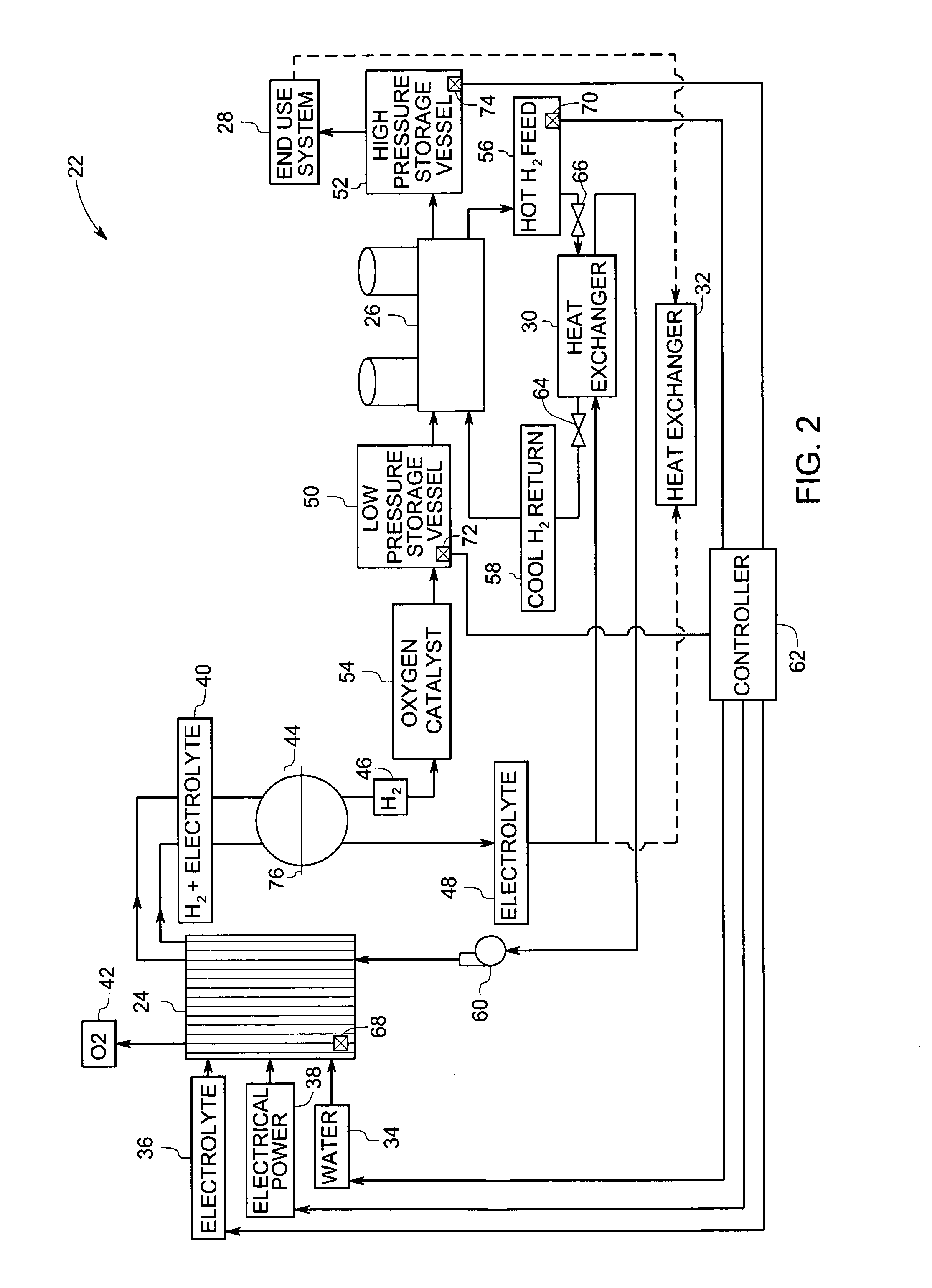Integrated hydrogen production and processing system and method of operation
a hydrogen production and processing system technology, applied in the direction of manufacturing tools, instruments, electric circuits, etc., can solve the problems of long periods of inefficient operation of the electrolyzer at lower temperatures, loss of system overall efficiency, and reducing system overall efficiency, so as to achieve the effect of increasing the temperature of the electroly
- Summary
- Abstract
- Description
- Claims
- Application Information
AI Technical Summary
Benefits of technology
Problems solved by technology
Method used
Image
Examples
example 1
[0032] In an exemplary 250 kW integrated hydrogen production and processing system hydrogen is produced at the rate of 5 kg / hr. The system operates for 16 hours a day with about 8 hours of downtime to produce 80 kg of hydrogen per day. During the downtime, the electrolyzer is switched off. As a result, the electrolyte temperature decreases at a rate dependent on multiple factors such as exposed surface area, pipe thickness and insulation. In this exemplary embodiment, assumptions were made for stack and system geometries.
[0033] In the integrated hydrogen production and processing system hydrogen generated by the electrolyzer is stored in a low pressure storage vessel. Further, a portion of the hydrogen is purified, compressed and stored in a high pressure storage vessel. As a result, the temperature of the hydrogen increases and is required to be cooled for storage in the high pressure storage vessel. Thus, for 80 kg of hydrogen produced in one day approximately 880 MJ of heat must...
example 2
[0035] In the exemplary hydrogen production and processing system of Example 1, the electrolyzer temperature is maintained during 8 hours of downtime by extracting heat from an end use system. Again, the electrolyte cools at a rate of about 6 MJ / hr based on convective and radiative cooling assumptions as discussed above. This corresponds to about 5 degree temperature drop per hour. Assuming that the hydrogen engine is about 40% efficient, approximately 60% of the energy consumed to operate the engine is available as waste heat. The 200 kW engine in this example rejects heat at a rate of about 58 MJ / hr assuming losses in the heat exchanger. As can be seen, the available heat from the engine exceeds the energy needed to maintain the operating temperature of the electrolyte. Therefore, by coupling the heat from the engine to a heat exchanger the electrolyte temperature can be maintained at a required operating temperature continuously during the downtime. Advantageously, the ability to...
PUM
| Property | Measurement | Unit |
|---|---|---|
| Temperature | aaaaa | aaaaa |
| Pressure | aaaaa | aaaaa |
| Flow rate | aaaaa | aaaaa |
Abstract
Description
Claims
Application Information
 Login to View More
Login to View More - R&D
- Intellectual Property
- Life Sciences
- Materials
- Tech Scout
- Unparalleled Data Quality
- Higher Quality Content
- 60% Fewer Hallucinations
Browse by: Latest US Patents, China's latest patents, Technical Efficacy Thesaurus, Application Domain, Technology Topic, Popular Technical Reports.
© 2025 PatSnap. All rights reserved.Legal|Privacy policy|Modern Slavery Act Transparency Statement|Sitemap|About US| Contact US: help@patsnap.com



